Expert Insights into Open Graph Images: The Complete Guide for Digital Marketers
Have you ever poured your heart and soul into crafting a beautiful blog article, only to find yourself eagerly sharing it with your audience on Twitter and Facebook, waiting for the clicks to roll in? But then, disappointment strikes. Despite your best efforts, the engagement is underwhelming, and it feels like your hard work isn't getting the attention it deserves.
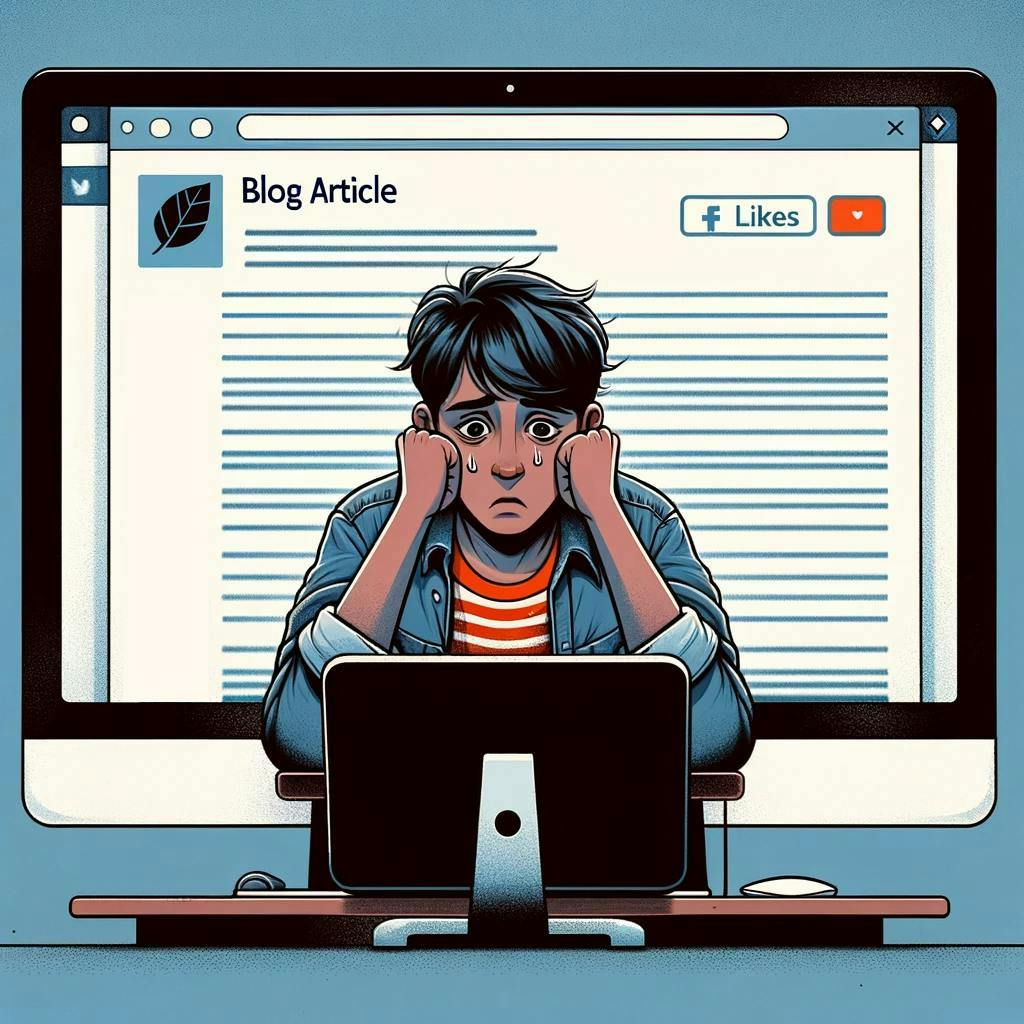
The culprit? Often, it's not the content itself, but how it's presented on social media. This is where Open Graph images come into play—a crucial but frequently overlooked element of social media optimization.
In this comprehensive guide, we'll dive into the world of Open Graph images and how they can significantly increase your conversion rates and boost your content's appeal on social media platforms. After reading this article, you will know:
- The Essentials of Open Graph Tags: Understand what Open Graph tags are and why they're a game-changer for your content's social media presence.
- Designing Impactful Open Graph Images: Learn the key principles of creating visually appealing and attention-grabbing images that encourage clicks.
- Implementation Strategies: Gain insights into correctly implementing Open Graph tags on your website, ensuring that your content always looks its best on social platforms.
So buckle up and let's dive into the world of Open Graph images, where we'll unlock the secrets to making your content stand out in the crowded social media landscape!
Understanding the Basics
Open Graph tags are pieces of code that control how URLs are displayed when shared on social media platforms like Facebook, Twitter, and LinkedIn. They're like your content's digital handshake, offering a first impression that can make or break user engagement.

Example of Open Graph Tags
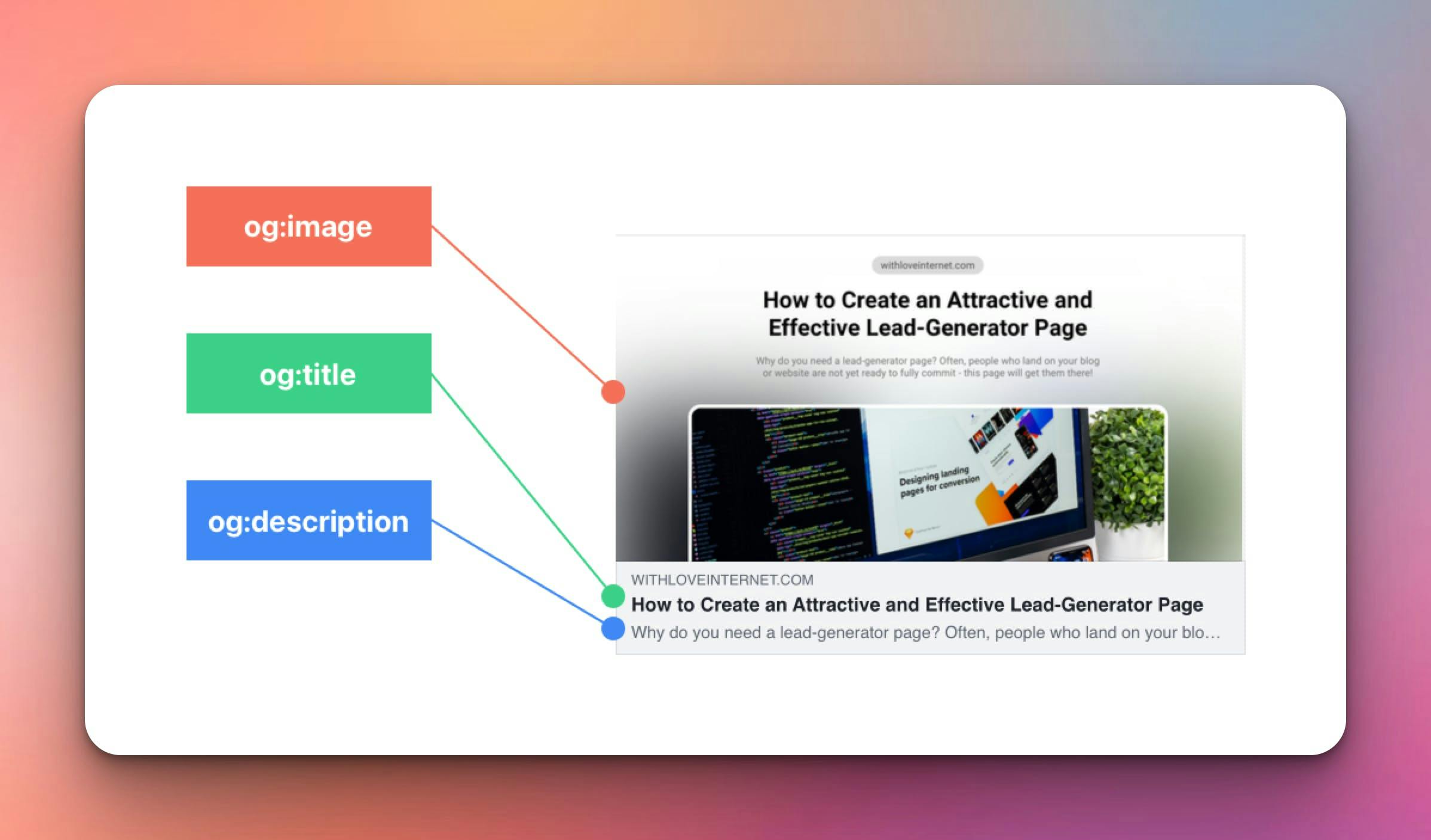
Example of Facebook sharing card when Open Graph Tags are set.
You might wonder, "Why bother with Open Graph tags?" The answer lies in control. Without these tags, social media platforms decide on their own how to display your content, often leading to unappealing or irrelevant previews. Open Graph tags give you the power to dictate exactly how your content appears, ensuring it's always shown in the best light.
Below you see an example on sharing a link without Open Graph tags.
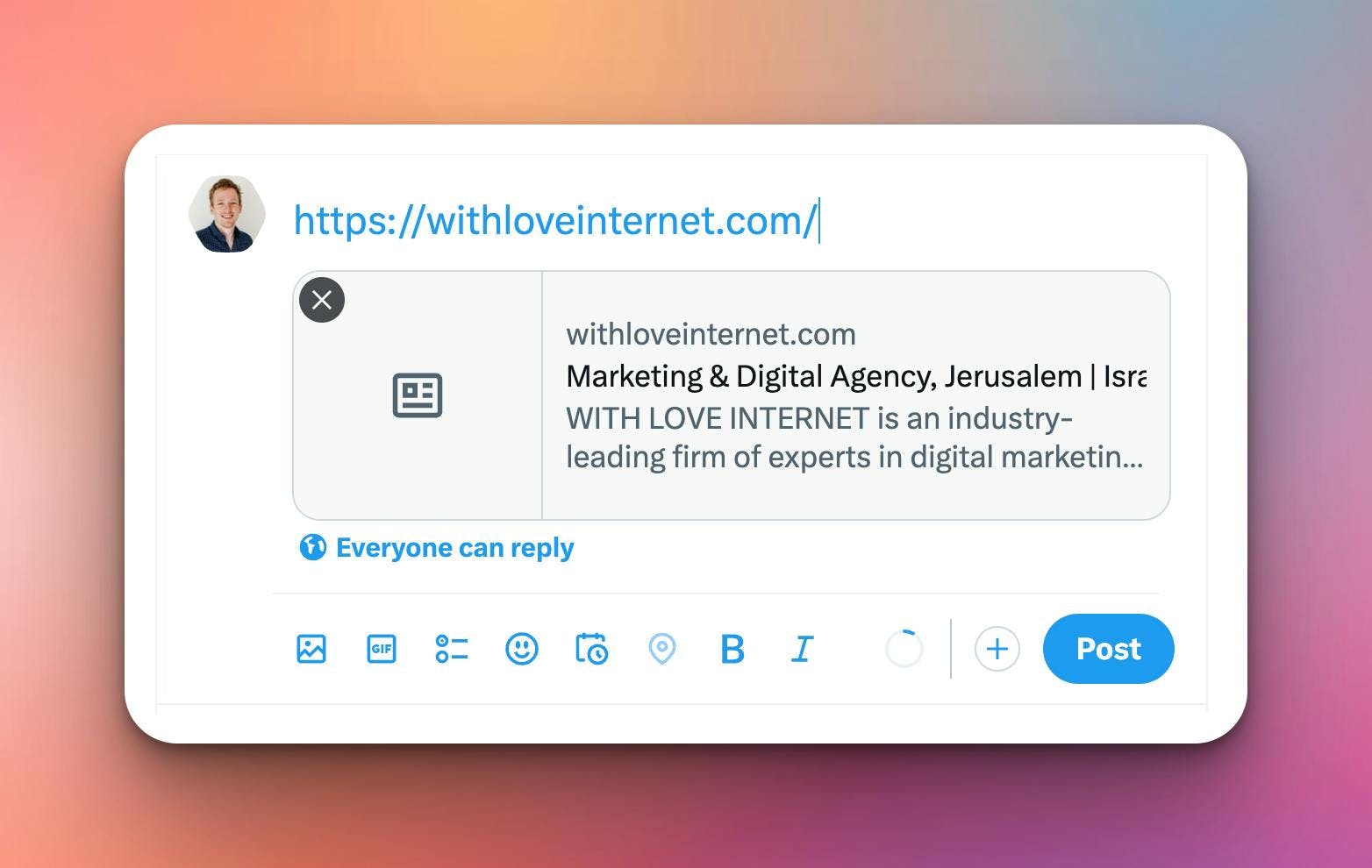
This is an example of the same link with Open Graph tags on twitter.
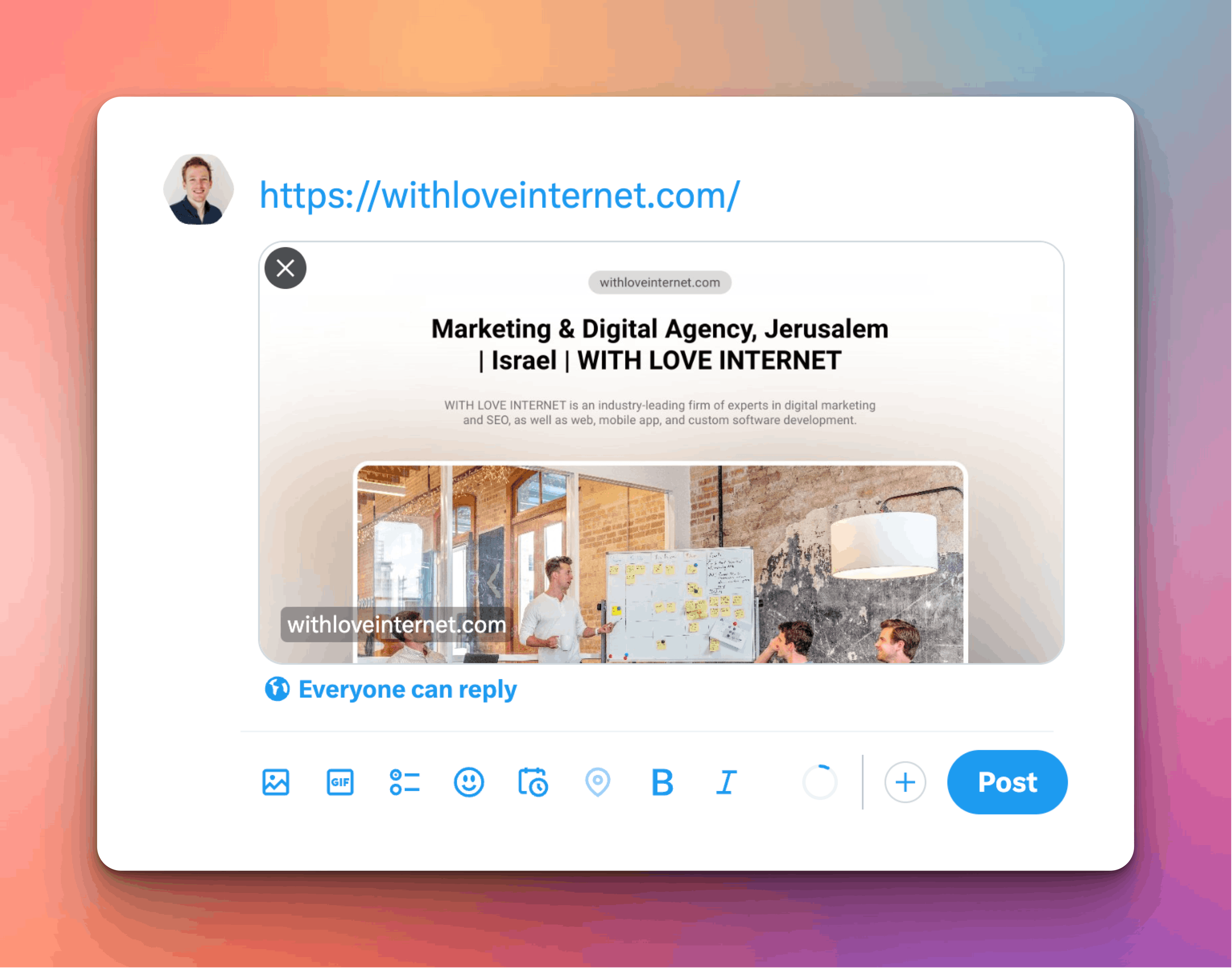
The Role of Open Graph in SEO
While Open Graph tags, including images, are primarily designed for social media optimization, their impact extends into the realm of search engine optimization (SEO) as well. Understanding and leveraging this can give your content an extra edge in digital visibility.
1. Open Graph Images in Google Image Search
Text Recognition: A significant aspect of using Open Graph images is their potential appearance in Google Image Search results, particularly when these images contain text. If your Open Graph image includes text relevant to your content, it can show up in image searches for those terms, thus driving additional traffic to your site.
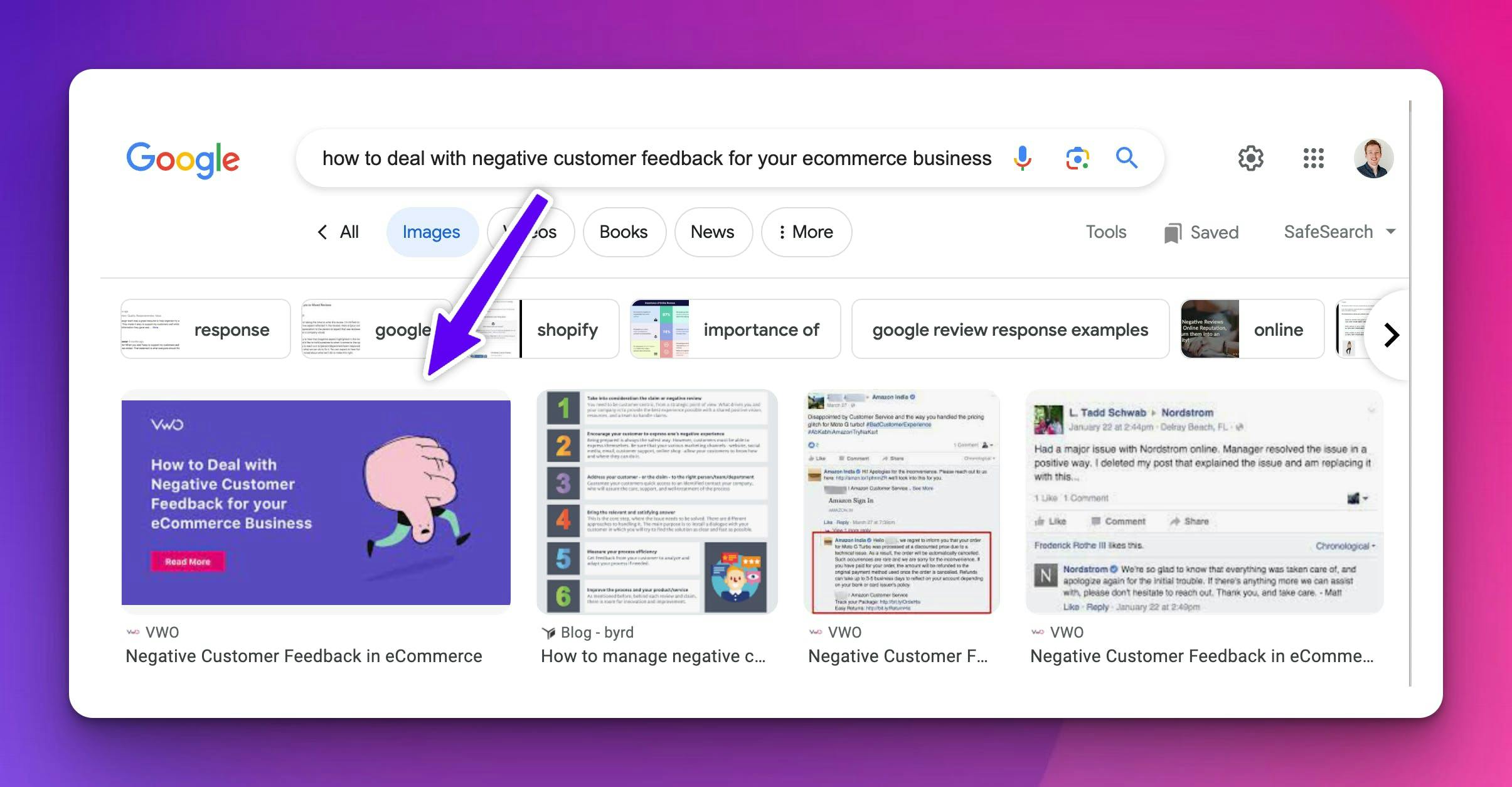
2. Indirect SEO Benefits
Click-Through Rates and Engagement: Open Graph images can indirectly boost your SEO by improving click-through rates (CTR) from social media platforms. Engaging images encourage more shares and interactions, which can lead to increased traffic to your website.
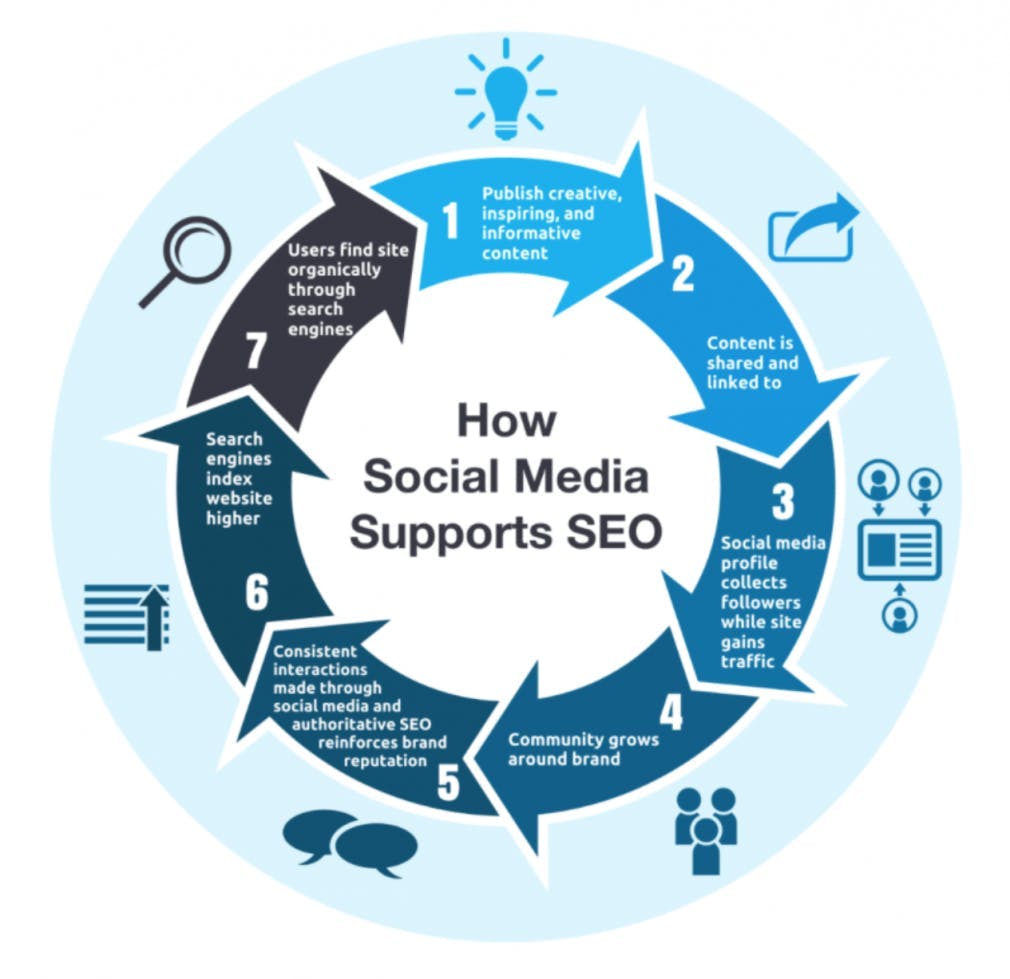
The Power of Open Graph Images
Your content's first impression doesn't start with words—it starts with an image. Open Graph images are the face of your posts on social media. They're not just pictures; they're your chance to grab someone's attention as they scroll. We're going to look at some of the best and break down what makes them click-worthy. Get ready for some serious OG image inspiration.
Worried that making unique OG images will add to your workload? Don't worry. We'll soon show you an easy method to automatically create these Open Graph Images with your own branded templates.
Jenzabar Resource
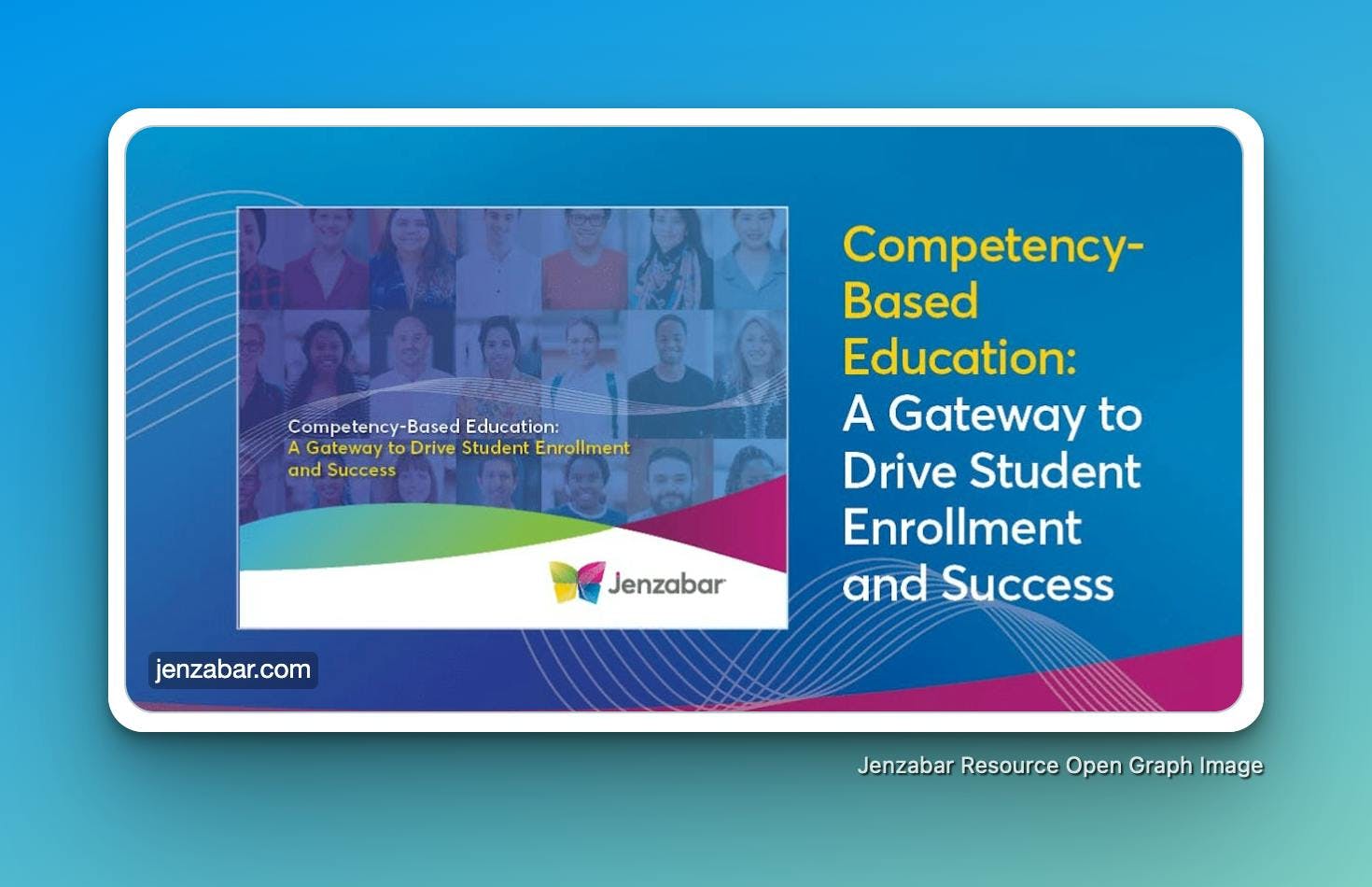
This Open Graph image for Jenzabar is a strong example of an effective social media asset for several reasons:
Brand Identity: The image includes the Jenzabar logo, reinforcing brand identity.
Visual Appeal: The background features a gradient of vibrant colors that draws the eye and stands out in a social media feed. This kind of color usage is effective for catching attention.
Design and Layout: The layout is clean and well-organized, with a balance between imagery, text, and whitespace. This prevents the image from appearing cluttered and ensures the main message is front and center.
RankMath Homepage
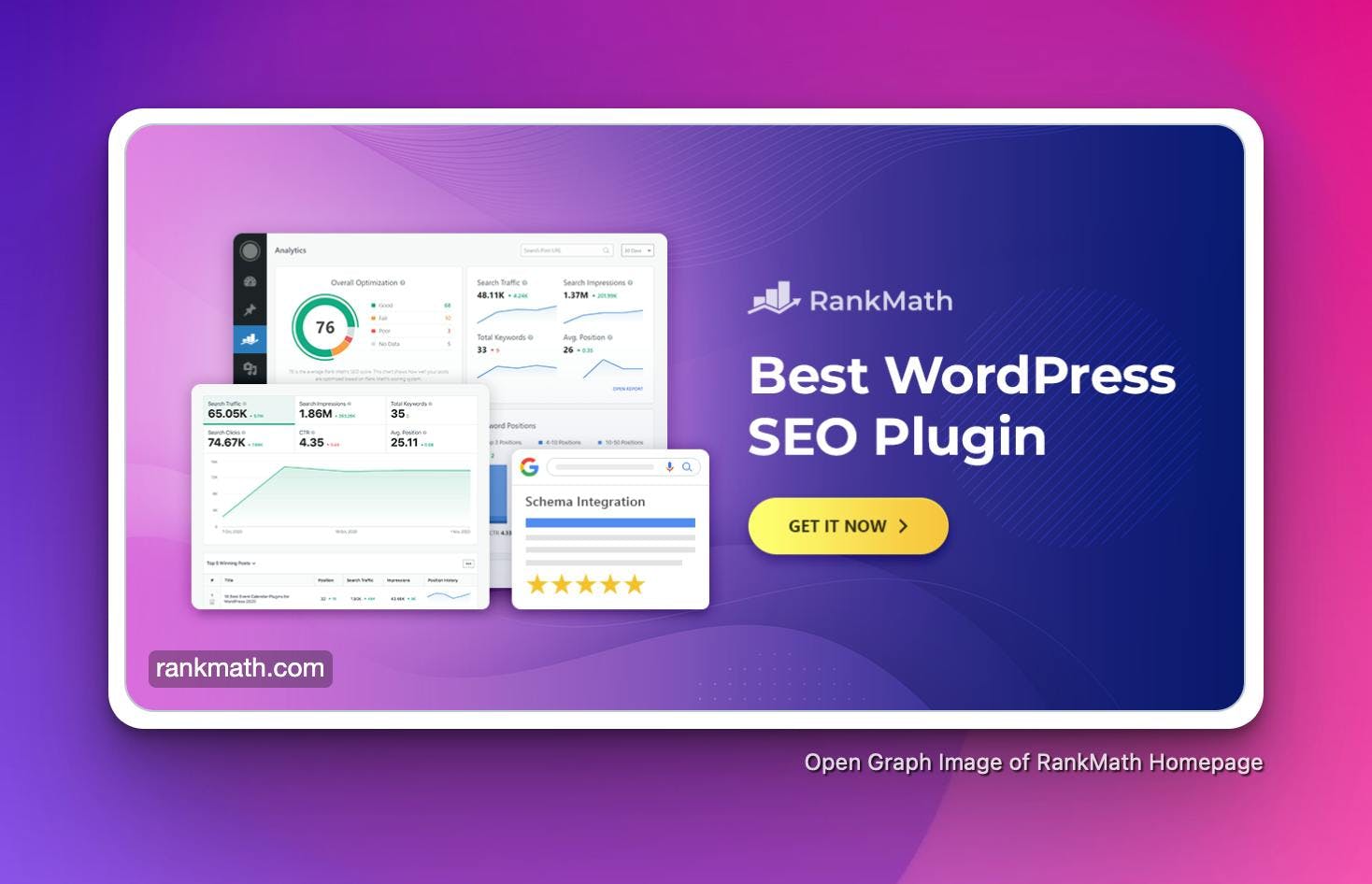
This Open Graph image for RankMath effectively communicates the product's purpose and appeal:
Product Highlight: The screenshot of the RankMath analytics dashboard immediately informs the viewer that this is a tool related to SEO and website analytics, which is the core service provided by RankMath.
Clear Value Proposition: The bold text "Best WordPress SEO Plugin" is a straightforward value statement that tells the user exactly what to expect. It's a strong claim that can entice WordPress users looking for SEO solutions.
Call to Action: The "GET IT NOW" button is a clear call to action, encouraging immediate engagement. Its placement and contrasting color make it pop against the background, drawing attention.
Visual Design: The use of a gradient from purple to pink is visually appealing and modern, which helps the image stand out on social media feeds. The gradient also gives a sense of dynamism and energy.
Social Proof: The five-star rating under the dashboard screenshot implies high user satisfaction and serves as social proof, which can be a powerful motivator for new users to explore the plugin.
Brand Identity: The RankMath logo is prominently displayed, ensuring brand recognition.
VWO Blog
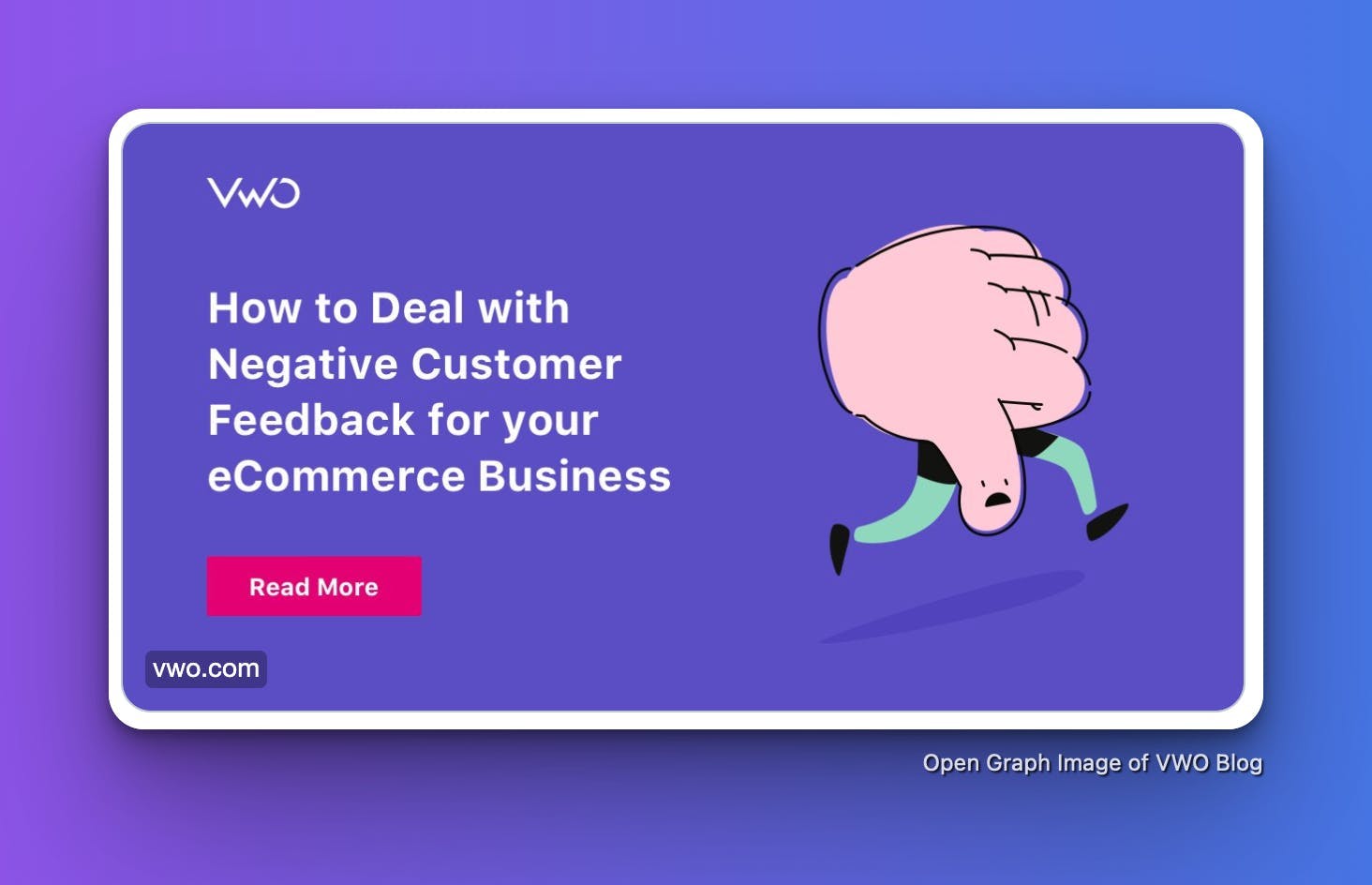
The Open Graph image for the VWO blog effectively captures attention and delivers its message with a few key design choices:
Engaging Visual Metaphor: The illustration of a thumbs-down sign with legs running away is a creative and engaging visual metaphor for negative feedback. This imagery is likely to resonate with viewers who understand the challenge of receiving negative customer feedback in a business context.
Readable Text: The font is large, bold, and easy to read, which is essential for Open Graph images as they're often viewed on small screens and within fast-scrolling social media feeds.
Brand Presence: The VWO logo is visible at the top, which is good for brand recognition.
Call to Action: The "Read More" button is a direct call to action with a contrasting color that stands out against the background, prompting the user to engage further with the content.
Stripe Blog
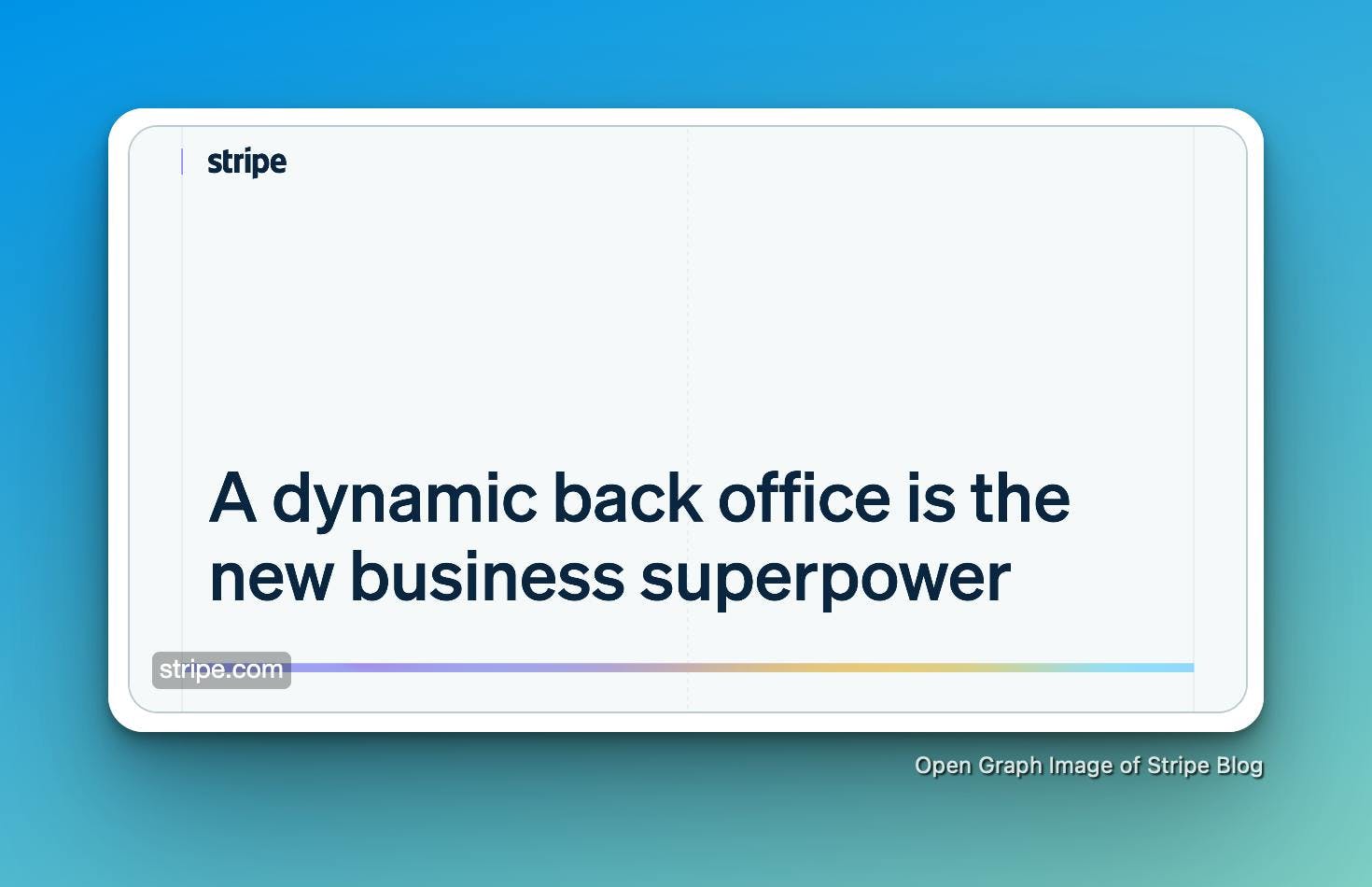
The Open Graph image for the Stripe blog conveys a clean and minimalist design approach:
Minimalist Design: The image adopts a minimalist aesthetic with a lot of white space that draws focus to the central message without any distractions. This simplicity aligns with modern design trends and can be very effective in conveying clarity and focus.
Brand Identity: The small Stripe logo at the top left corner is subtle but ensures brand recognition.
Typography: The font is modern, readable, and large enough to be easily seen on different devices, which is crucial for engagement on social media.
Kount Pricing Page
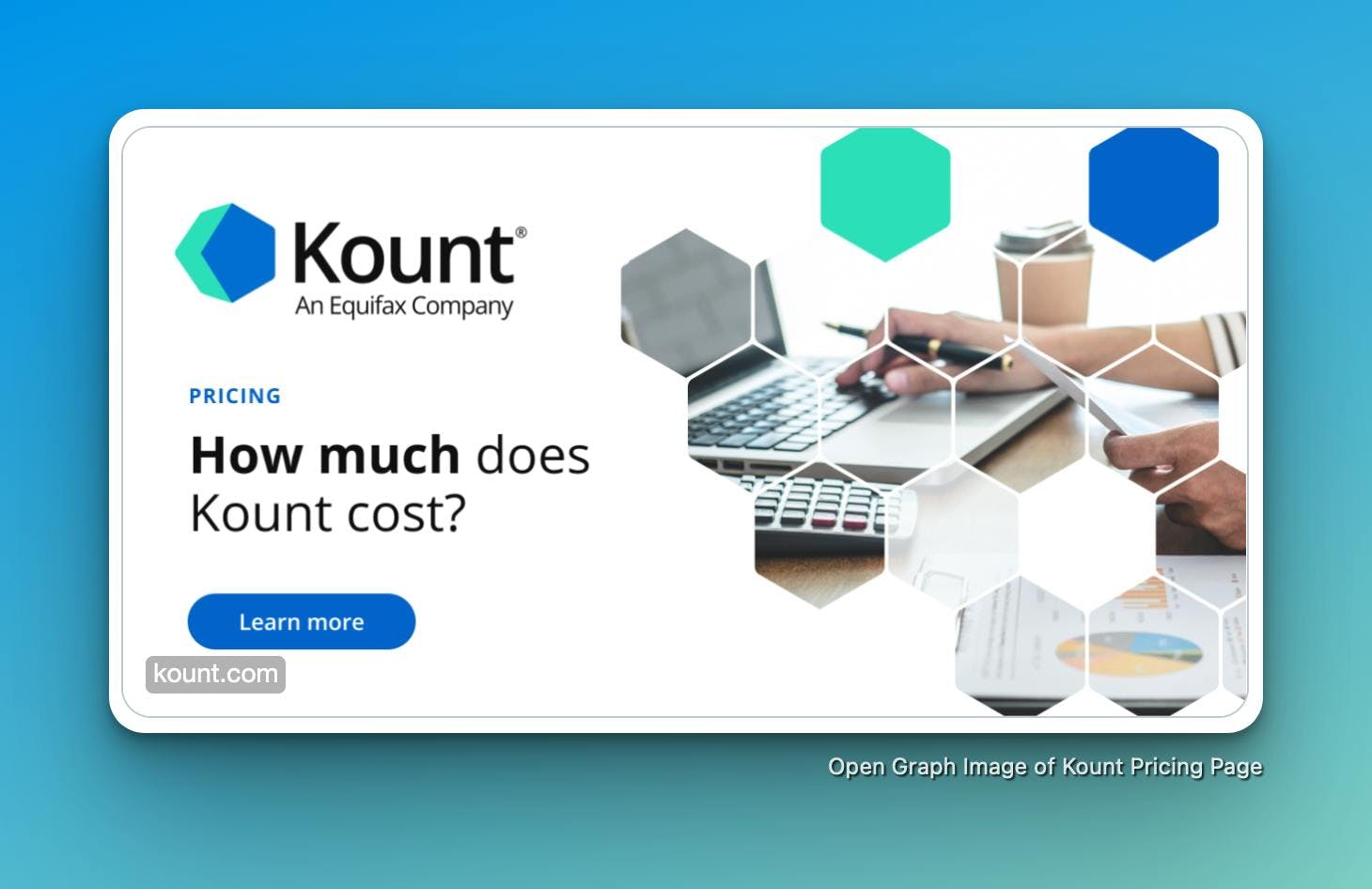
The Open Graph image for the Kount Pricing Page uses several elements to convey information and encourage user engagement:
Direct Question: The image poses a direct question, "How much does Kount cost?" This is a common and critical query for potential customers, making the image immediately relevant and engaging for the target audience.
Branding: The logo of Kount, along with the tag "An Equifax Company," is placed prominently at the top, which establishes trust and ensures brand recognition.
Call to Action: The "Learn more" button is a clear call to action, inviting the user to click through for further information. Its placement and contrasting color make it stand out and easy to notice.
Design Elements: The inclusion of geometric shapes and the hexagonal pattern overlaying the image give it a modern and tech-savvy feel, which is appropriate for a company specializing in fraud prevention and digital identity services.
Best Practices for Open Graph Images
In this section we'll break down the universal specs that hit the sweet spot for Twitter, LinkedIn, and Facebook. Whether it's crafting the perfect pixel dimensions or choosing a file format that's friendly across the board, we've got the blueprint to make your images shine in the social sphere.
Ideal Image Dimensions and Formats
Twitter:
- Aspect Ratio: 2:1 is ideal.
- Dimensions: Minimum of 300x157 pixels; maximum of 4096x4096 pixels.
- File Size: Images must be less than 5MB.
- Formats Supported: JPG, PNG, WEBP, and GIF (only the first frame of animated GIFs is used).
LinkedIn:
- Maximum File Size: 5 MB.
- Minimum Image Dimensions: 1200 (w) x 627 (h) pixels.
- Recommended Ratio: 1.91:1 for optimal display.
- Formats Supported: JPG and PNG (WEBP is not supported).
Source: https://www.linkedin.com/help/linkedin/answer/a521928
Facebook:
- Minimum Image Dimensions: 200 x 200 pixels; 600 x 315 pixels for a larger display.
- Optimal Image Dimensions: 1200 x 630 pixels to avoid cropping.
- File Size: Must not exceed 8 MB.
- Formats Supported: JPG, PNG, and WEBP.
Source: https://developers.facebook.com/docs/sharing/webmasters/images/
Universal Compatibility: Dimensions, File Size, and Format
When creating Open Graph images, aiming for universal compatibility across major social platforms like Twitter, LinkedIn, and Facebook is key. Here’s how you can optimize your images for broad acceptance:
- Optimal Image Dimensions: A dimension of 1200 x 630 pixels is a versatile choice that works well across Twitter, LinkedIn, and Facebook. This size respects the different platform requirements, minimizes the risk of cropping issues, and ensures a clear and engaging display of your content.
- File Size Consideration: Keeping your Open Graph image file size under 5MB is advisable. This file size is compatible with Twitter, LinkedIn, and Facebook, making it a practical guideline to follow for smooth uploads and quality displays across these platforms.
- Image File Format: Given that LinkedIn does not support WEBP, the most universally compatible formats are JPG and PNG. These formats ensure your Open Graph images are displayed correctly and maintain their quality across all the mentioned social media platforms.
By aligning your Open Graph images with these universal compatibility guidelines, you ensure that your content is presented at its best, regardless of the social media platform it appears on.
Implementing Open Graph tags might seem technical, but it's a straightforward process. Here's a step-by-step guide to getting it right:
Understanding the Basic Tags:
- og:title: The title of your article or page.
- og:type: The type of your content (e.g., article, website).
- og:image: The URL of the image you want to appear when shared.
- og:url: The canonical URL of your page.
- og:description: A brief description of your content.
Here's what the tags looks like in code:
<meta property="og:title" content="10 Tips for a Greener Lifestyle" /><meta property="og:type" content="article" /><meta property="og:image" content="https://example.com/thumbnail.jpg" /><meta property="og:url" content="https://example.com/greener-lifestyle" /><meta property="og:description" content="Discover how easy it is to make your day-to-day life more eco-friendly with these simple tips." />
Tailoring Tags for X:
While Open Graph tags are widely recognized across social platforms, X (formerly known as Twitter) uses its own set of meta tags to enhance how content is displayed in tweets. These tags, known as Twitter Cards, can be used alongside OG tags to ensure your content looks its best on X. Here are the key tags to include:
- twitter:card: Defines the type of content you're sharing. Options include summary, summary_large_image, app, or player.
- twitter:site: The Twitter handle of the website or the site's creator.
- twitter:title: The title of the content, similar to og:title.
- twitter:description: A brief description of the content, akin to og:description.
- twitter:image: URL of the image to display, similar to og:image.
Here's an example of the X specific tags in code:
<meta name="twitter:card" content="summary_large_image" /><meta name="twitter:site" content="@ExampleSite" /><meta name="twitter:title" content="10 Tips for a Greener Lifestyle" /><meta name="twitter:description" content="Discover how easy it is to make your day-to-day life more eco-friendly with these simple tips." /><meta name="twitter:image" content="https://example.com/thumbnail.jpg" />
Adding Tags to Your Website's HTML:
- Place the Open Graph tags in the <head> section of your HTML document.
- Ensure that the og:image tag points to the correctly sized image, as discussed in the previous sections.
Here’s an complete example on where to put the Open Graph tags in your code:
<!DOCTYPE html><html lang="en"><head><meta charset="UTF-8"><meta name="viewport" content="width=device-width, initial-scale=1.0"><!-- Standard title tag --><title>Your Page Title Here</title><!-- Standard description tag --><meta name="description" content="A standard HTML description of your page that appears in search engine results."><!-- Open Graph tags for social media --><meta property="og:title" content="Your Content Title Here" /><meta property="og:type" content="website" /><meta property="og:image" content="URL to your image here" /><meta property="og:url" content="URL to your content here" /><meta property="og:description" content="A brief description of your content for social media sharing" /><!-- Twitter Card tags for Twitter --><meta name="twitter:card" content="summary_large_image" /><meta name="twitter:site" content="@YourTwitterHandle" /><meta name="twitter:title" content="Your Content Title Here" /><meta name="twitter:description" content="A brief description of your content for Twitter sharing" /><meta name="twitter:image" content="URL to your image here" /><!-- Other tags, scripts, and styles can also be included here --></head><body><!-- Your website's content goes here --></body></html>
Testing Your Tags:
Use Facebook's Sharing Debugger and Twitter's Card Validator to test how your content appears when shared. https://developers.facebook.com/tools/debug
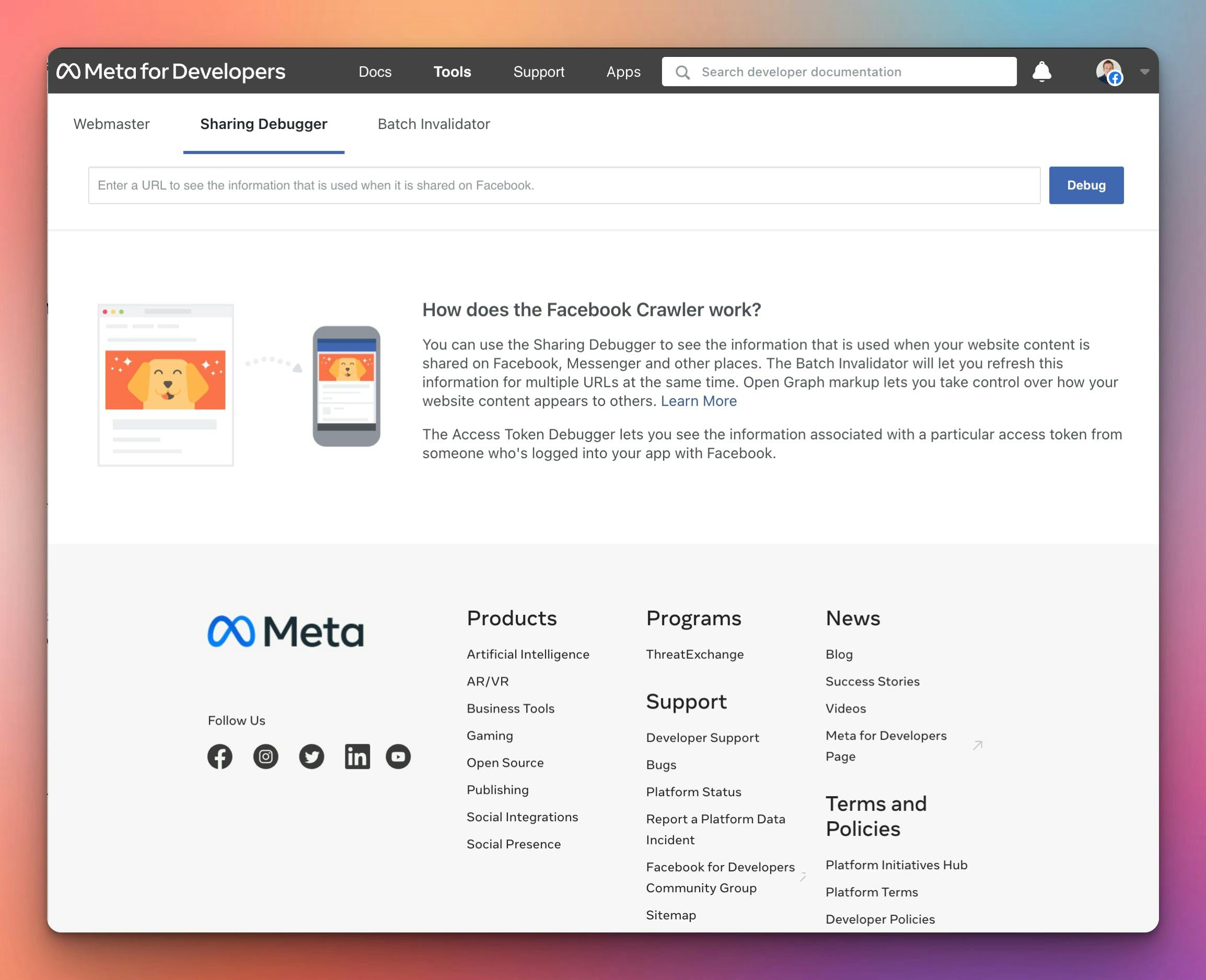
LinkedIn also has a Post Inspector tool for checking how your content will display. https://www.linkedin.com/post-inspector/
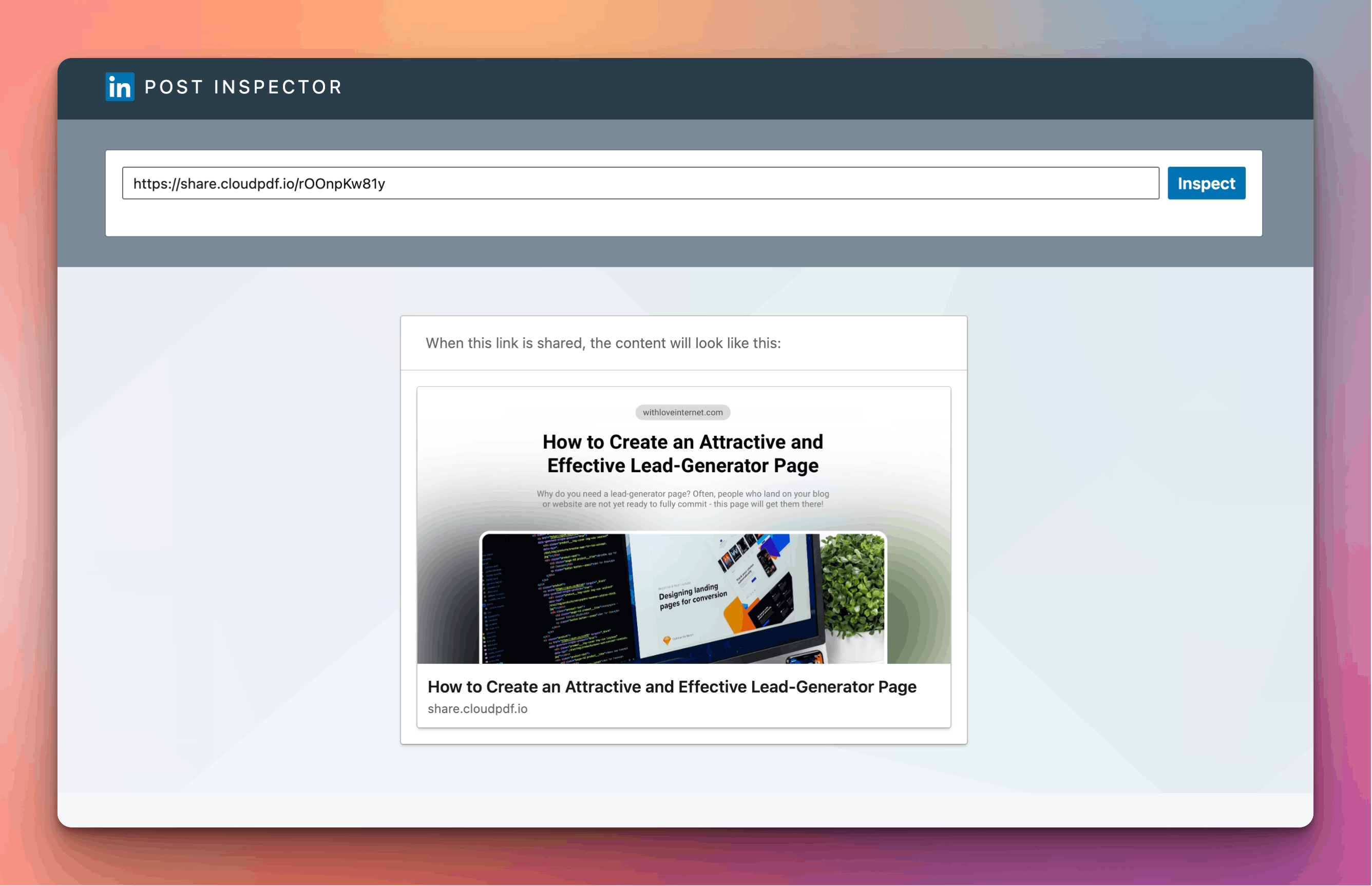
Testing Your Tags with Our Website Tool
In addition to the tools provided by social media platforms, we have developed a convenient way for you to see how your website appears on the different social media platforms.
Just head to the open graph preview tool in order to test it with your website.
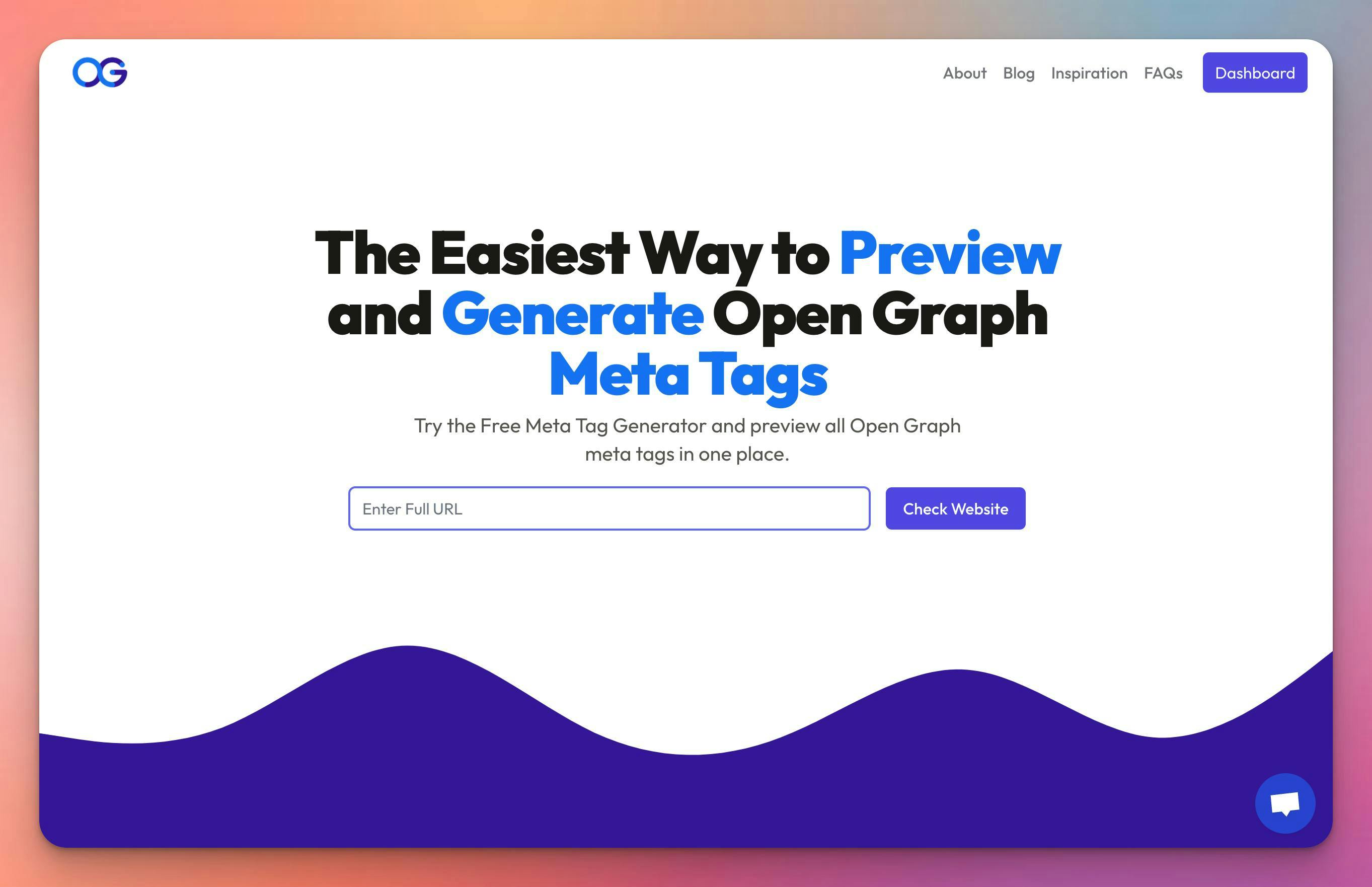
Troubleshooting Common Issues:
- If images or descriptions don't appear correctly, double-check the tag syntax and the accessibility of the image URLs.
- Sometimes, changes aren't immediately reflected due to caching; use the debugging tools to scrape the latest version of your page.
After understanding the basics and significance of Open Graph tags, a key question arises: how can we efficiently manage these tags, especially for websites with numerous pages or frequently updated content? This brings us to the innovative solution of dynamically generating Open Graph images.
Dynamically Generating Open Graph Images
Creating individual Open Graph images for each blog post or web page can be a time-consuming task, especially for content-rich websites. Here's where the power of automation comes into play, simplifying this process significantly.
How It Works
- Template Creation: On opengraph.xyz, you can design a template for your OG images. This template acts as a foundation, incorporating elements like the author's picture, the post's title, and a "Read More" button.
- Dynamic Generation: When you publish a new blog post with a title, description, and image, opengraph.xyz automatically generates the OG image based on your template. This means no more manual creation of images for each post!
Here's an example of how this automated technology transforms the way a blog post appears when shared:
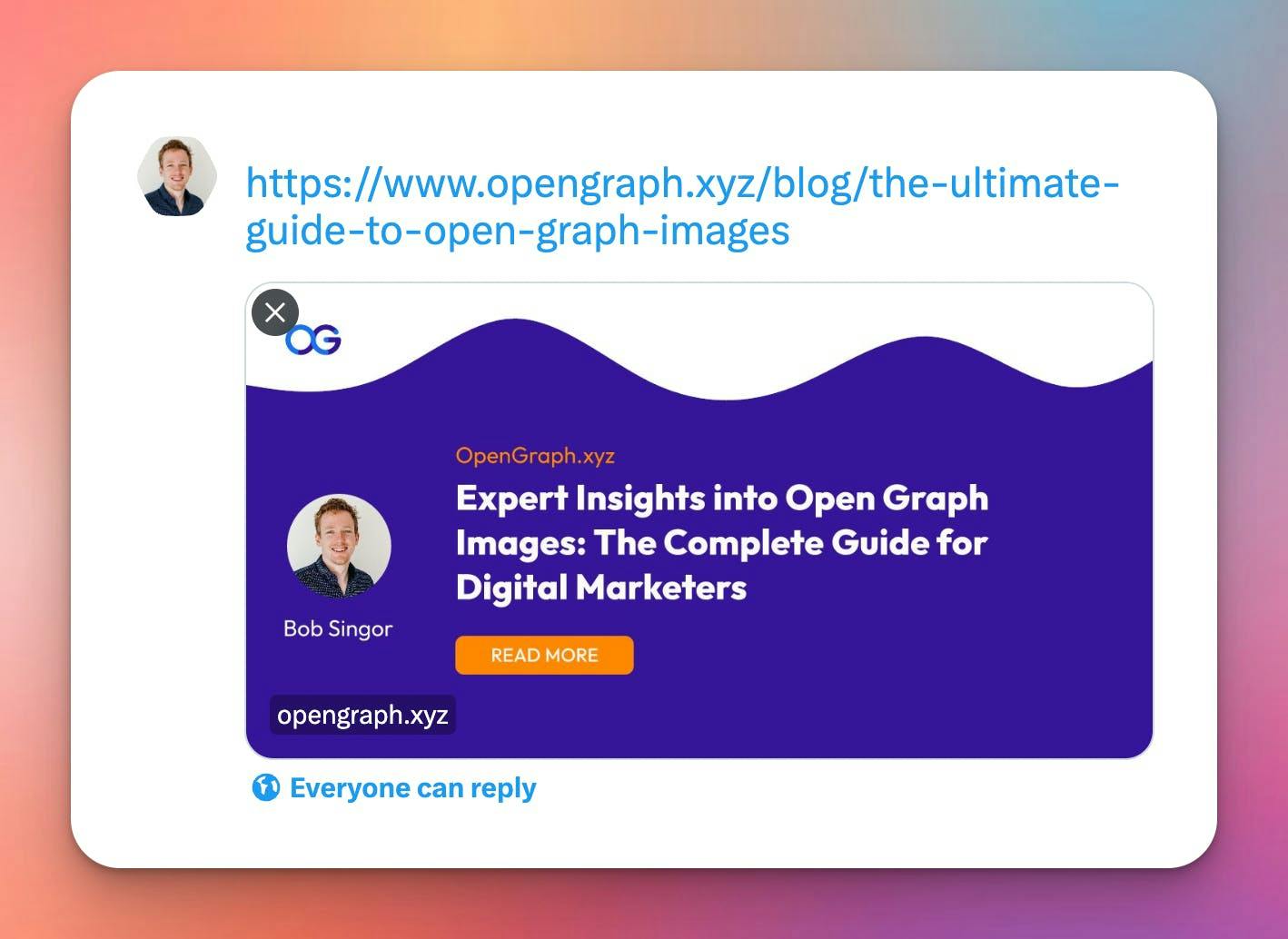
The Technical Magic Behind It
After setting up your OG template, you receive a URL in this format:
https://res.opengraph.xyz/3ca378fe-1f72-4865-be69-81c790f81159/v1/{author_image_url}/{author_name_text}/{title_text}/og.png
To generate an OG image for a specific post, you simply replace {title_text}, {description_text}, and {image_url} with URL-encoded values of your post's title, description, and image URL.
For instance, an auto-generated URL for a blog post titled "The Ultimate Guide to Open Graph Images" with as author “Bob Singor” and an image of the author would look like this:
https://res.opengraph.xyz/3ca378fe-1f72-4865-be69-81c790f81159/v1/https%3A%2F%2Fcdn.theopengraph.com%2Fproduction%2Fdocuments%2F7e9de868-4f17-4446-80f8-693151edf9c8.jpg%3Ftoken%3DykULTEVBjCiCjce5Zkxw9Xuf9o58hgZ1CuEBf1L869A%26height%3D512%26width%3D512%26expires%3D33238727991/Bob%20Singor/The%20Ultimate%20Guide%20to%20Open%20Graph%20Images/og.png
Implementing It in Your Tech Stack
To integrate this dynamic OG image generation into your website, you can use programming languages like TypeScript or PHP. Below are brief examples of how you might implement this in each language.
Typescript Example
const createOgImageUrl = (templateId: string, versionNumber: string, title: string, description: string, imageUrl: string): string => {const baseUrl = `https://res.opengraph.xyz/${templateId}/${versionNumber}`;return `${baseUrl}/${encodeURIComponent(title)}/${encodeURIComponent(description)}/${encodeURIComponent(imageUrl)}/og.png`;};
PHP Example
function createOgImageUrl($templateId, $versionNumber, $title, $description, $imageUrl) {$baseUrl = "https://res.opengraph.xyz/" . $templateId . "/" . $versionNumber;return $baseUrl . '/' . urlencode($title) . '/' . urlencode($description) . '/' . urlencode($imageUrl) . '/og.png';}
By leveraging opengraph.xyz, you can automate the creation of tailored and engaging Open Graph images for each of your blog posts, saving time and ensuring consistency across your social media shares. This technique not only enhances the visual appeal of your shared content but also contributes significantly to streamlining your content management workflow.
Conclusion
As we've explored throughout this guide, the power of Open Graph images and tags cannot be overstated in the realm of social media optimization. By understanding and utilizing these tools effectively, you have the opportunity to dramatically transform how your content is perceived and engaged with on social platforms.
Key Takeaways
- Open Graph Tags Are Essential: They are not just a technical detail but a vital component of your social media strategy. They allow you to control how your content is presented, making it more attractive and clickable.
- Impactful Design Matters: An engaging Open Graph image can significantly increase the likelihood of your content being noticed and shared. It's the first impression you make on your audience.
- Automation Saves Time: With tools like opengraph.xyz, the process of creating unique and appealing Open Graph images for every post can be automated, saving you time and ensuring consistency across your posts.
Final Thoughts
We hope this guide has provided you with valuable insights and actionable strategies to improve your social media presence. Remember, in a world where digital content is abundant, standing out is key. Open Graph images and tags are your allies in making sure your content doesn't just blend into the background but shines brightly on every social media feed.
Thank you for reading, and here's to your success in the ever-changing world of social media optimization!